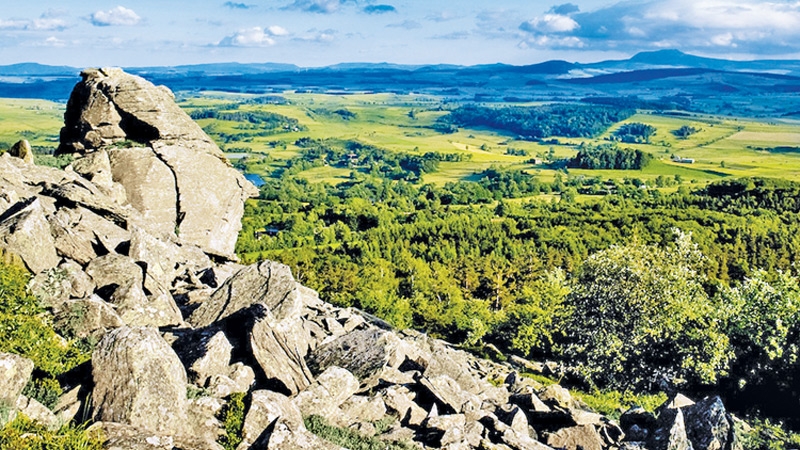It is the spring of 1943.
In the photograph, Daniel is seated outside. Behind him, the limbs and leaves of trees are outlined in mottled black and white. His face is turned three‑quarters away from the camera, his dark hair swept back. Daniel is dressed in a white button‑down shirt here, a jaunty striped tie loosely knotted at the neck. Over his shirt, he wears a dark sweater that’s been patched with incongruously bright thread near the shoulder. His glasses are round, dark circles, the lenses thick enough to magnify forward the dappled light of the trees. Someone just out of the frame-a woman-rests a hand on his back.
He smiles softly.
Daniel has one of those puzzling faces, truth be told. In nearly every one of the few photographs I’ve seen of him, he looks like a slightly different person. Yes, there is always the dark hair and the curly big ears. There is always the full mouth, and a wistfulness behind the eyes. But if you hold the photographs up close, if you really examine them, you see many tiny worlds, all different, in that one face. And then, if you pull the photographs back and squint, the aggregate alternates between soft and hard, bright and blank, lovely and unlovely.
As a toddler, Daniel is standing next to his sister Suzie within the crowd of boys of Les Sablons at École des Roches. Suzie and he are both in lacy white dresses; she wears a bright flower in her long hair and leads with her forehead, perplexed. He is looking up, but also straight into the camera, already, at two years old, with a direct, furrowed brow.
Then, at eight years, Daniel tilts ever so slightly away from the rest of his family in the velveteen fuss of the Sablons drawing room: patently handsome, patently intelligent, and pale.
At twelve or so, Daniel wears wire glasses, and his face is softer, more open. By thirteen and fourteen he is in a suit and tie, and something more dazed, and even a little dark, passes across his face. Then, later again, Daniel is outside working on some construction for the school. This could be from when he was diagnosed with pericarditis: His cheeks are bloated, his back awkwardly bowed. I can’t see inside his face at all here. I know of no pictures from Daniel’s later years between Verneuil and Paris, when his inner life was growing richer with every passing day, with every passing ponderous walk to the train station, alone under the heavy gray skies, among the single bird calls.
In nearly every one of the few photographs I’ve seen of Daniel, he looks like a slightly different person.
But then there is, from 1934 or 1935, an image of Daniel on a boat off the coast of Lebanon, the sun blasting and blurring his features, turning his glasses to dazzling white circles. And, from 1937 or so, a snapshot of Daniel in Rome-the days of the on‑again‑off‑again pretty little box-where he is standing in a slim suit, wearing white shoes and the hint of happiness. What lies ahead?
The Plateau. The Little Crickets. Decisions.
Daniel’s face is different everywhere. But here, on the Plateau where he now lives, seated at three‑quarters, looking down, aged thirty‑one or thirty‑two, a hand on his back, the softest smile, relaxed and full, that face is finally beautiful. It finally contains all the multitudes.
I know what is coming. But I don’t know how Daniel did what he did next. I strain to see evidence in the picture-in his face? in just the eyes?-or hear it somehow. I look everywhere for signs, for a cause. In every tiny mote. His face is smooth, like a boy’s. I hold the picture close, then far, then close again.
But how do you see the sum of something that changes so markedly with the changing of the light? When, really, the readiness is all?
- Lit Hub



Add new comment